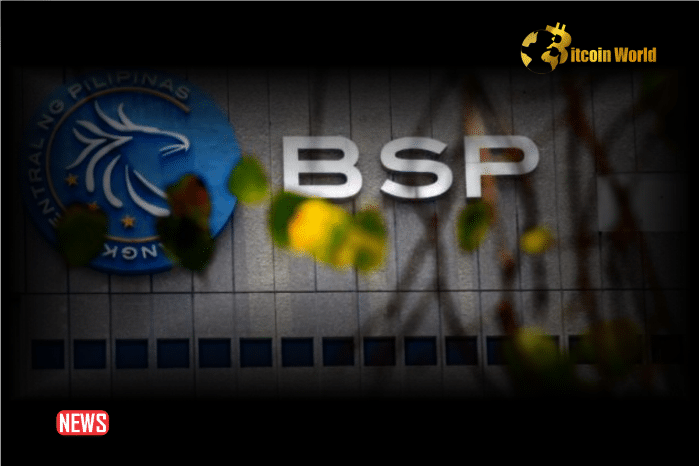Exciting news for crypto enthusiasts in the Philippines! The digital currency scene is buzzing as Bangko Sentral ng Pilipinas (BSP), the country’s central bank, has officially given the green light for a pilot program of PHPC – a Philippine Peso-backed stablecoin. This move, in collaboration with Coins.ph, a leading crypto platform, could be a game-changer for how Filipinos interact with digital finance. Let’s dive into what this means for the Philippines and the broader crypto world.
What is PHPC and Why is the Philippines Exploring a Peso-Backed Stablecoin?
Essentially, PHPC is designed to be a digital version of the Philippine Peso, backed 1:1 by actual Peso reserves. Think of it as a stable bridge between traditional fiat currency and the crypto world. Why is the BSP interested in this? Well, stablecoins offer a fascinating blend of benefits, and the Philippines is keen to explore them:
- Stability in Crypto: Unlike volatile cryptocurrencies like Bitcoin or Ethereum, stablecoins aim to maintain a steady value, usually pegged to a fiat currency like the US dollar or, in this case, the Philippine Peso. This stability makes them more practical for everyday transactions.
- Faster and Cheaper Transactions: Digital currencies, especially stablecoins, can potentially streamline payments, both domestically and internationally, reducing costs and speeding up transaction times compared to traditional banking systems.
- Financial Inclusion: The Philippines, like many developing nations, is striving for greater financial inclusion. Stablecoins could offer a more accessible entry point to digital finance for the unbanked and underbanked population.
- Innovation and Modernization: Embracing blockchain technology and digital currencies positions the Philippines at the forefront of financial innovation in the region, potentially attracting investment and talent.
Sandbox Testing: How Will PHPC Be Put to the Test?
The BSP isn’t rushing into full-scale implementation. Instead, they’re taking a measured approach through a ‘Regulatory Sandbox’. This sandbox environment allows for real-world testing in a controlled setting. Here’s what the sandbox testing entails:
- Collaboration with Coins.ph: BSP has partnered with Coins.ph, a well-established and licensed crypto service provider in the Philippines, to conduct this pilot. Coins.ph’s experience and reach in the local crypto market make them an ideal partner.
- Real-World Performance Evaluation: The core goal is to see how PHPC performs in real-world scenarios. This includes assessing its speed, efficiency, security, and overall impact on the existing financial system.
- 1:1 Peso Backing: To ensure stability, Coins.ph will maintain Peso reserves equivalent to the amount of PHPC in circulation within the sandbox. This 1:1 backing is crucial for maintaining the peg to the Philippine Peso.
We're excited to announce that Coins.ph has been selected by the Bangko Sentral ng Pilipinas (@BangkoSentral) to participate in its Regulatory Sandbox to pilot test a Philippine Peso-backed stablecoin (PHPC). This initiative marks a significant step forward in bridging traditional finance with blockchain technology in the Philippines. pic.twitter.com/vEqWPc7zYJ
— Coins.ph (@coinsph) May 9, 2024
What Use Cases Will Be Explored?
The sandbox environment will be used to explore various practical applications of PHPC, including:
- Domestic and Cross-Border Payments: Testing how PHPC can facilitate faster and cheaper money transfers within the Philippines and internationally.
- Trading with Virtual Assets: Examining the use of PHPC in trading other cryptocurrencies, potentially offering a more stable trading pair.
- Hedging Against Market Volatility: Assessing if PHPC can serve as a safe haven asset within the crypto space during periods of market turbulence.
- DeFi Applications: Exploring the potential of PHPC in Decentralized Finance (DeFi) platforms, such as providing collateral or liquidity.
See Also: Rwanda Central Bank Proceeds With Ambitious Retail CBDC Project
What Happens After the Sandbox? Real-World Implementation of PHPC
The pilot program is a crucial first step, but the journey doesn’t end there. Whether PHPC transitions from the sandbox to real-world usage hinges on the outcomes of this testing phase and subsequent evaluations by the BSP.
Timeline and Regulations: Sandbox testing periods in the Philippines can last from 3 to 12 months, depending on the project’s complexity. While no specific timeline has been announced for the PHPC pilot, the duration will be determined by the BSP as they assess the project’s progress and results.
Building on Past Initiatives: This isn’t the Philippines’ first foray into stablecoins. UnionBank launched PHX, another Peso-backed stablecoin, back in 2019. PHX, aimed at boosting financial inclusion, operates on UnionBank’s i2i platform and is also redeemable for Pesos. PHPC builds upon this existing groundwork and reflects the continued interest in leveraging digital currencies for financial advancement in the Philippines.
The Future of Digital Payments in the Philippines?
The BSP’s move to pilot PHPC is a strong signal that the Philippines is seriously exploring the potential of digital currencies to modernize its financial landscape. If successful, PHPC could pave the way for a more efficient, inclusive, and innovative financial system in the country. It’s a development worth watching closely for anyone interested in the intersection of crypto and traditional finance, particularly in emerging markets.
Disclaimer: The information provided is not trading advice. Bitcoinworld.co.in holds no liability for any investments made based on the information provided on this page. We strongly recommend independent research and/or consultation with a qualified professional before making any investment decisions.
#Binance #WRITE2EARN
Disclaimer: The information provided is not trading advice, Bitcoinworld.co.in holds no liability for any investments made based on the information provided on this page. We strongly recommend independent research and/or consultation with a qualified professional before making any investment decisions.


